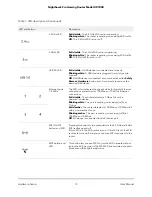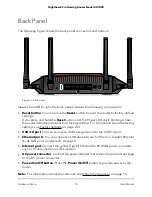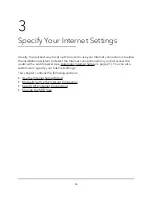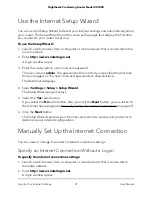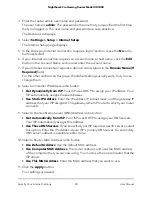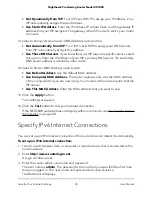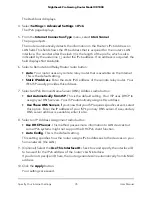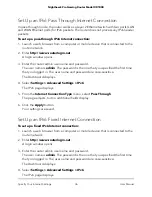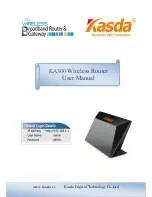
4. Within two minutes, on your computer or mobile device, press its WPS button or
follow its instructions for WPS connections.
Your computer or mobile device connects to the WiFi network.
Types of Logins
Separate types of logins serve different purposes. It is important that you understand
the difference so that you know which login to use when.
Several types of logins are associated with the router:
•
ISP login. The login that your ISP gave you logs you in to your Internet service. Your
service provider gave you this login information in a letter or some other way. If you
cannot find this login information, contact your service provider.
•
WiFi network key or password. Your router is preset with a unique WiFi network
name (SSID) and password for WiFi access. This information is on the router label.
•
Router login. This logs you in to the router web interface from a web browser as
admin.
Use a Web Browser to Access the Router
When you connect to the network (either with WiFi or with an Ethernet cable), you can
use a web browser to access the router to view or change its settings. When you access
the router, the software automatically checks to see if your router can connect to your
Internet service.
Automatic Internet Setup
You can set up your router automatically, or you can use a web browser to access the
router and set up your router manually. Before you start the setup process, get your ISP
information and make sure that the computers and devices in the network are using
the settings described here.
When your Internet service starts, your Internet service provider (ISP) typically gives you
all the information needed to connect to the Internet. For DSL service, you might need
the following information to set up your router:
•
The ISP configuration information for your DSL account
•
ISP login name and password
•
Fixed or static IP address setting (special deployment by ISP; this setting is rare)
User Manual
21
Connect to the Network and
Access the Router
Nighthawk Pro Gaming Router Model XR1000







